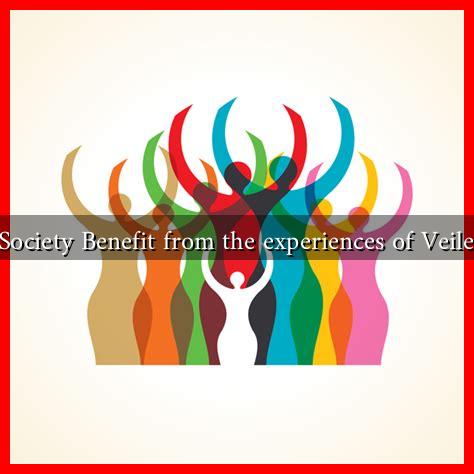-
Table of Contents
How Can Society Benefit from the Experiences of Veiled Women?
In recent years, the visibility of veiled women in various societies has sparked discussions about identity, culture, and the role of women in public life. The experiences of veiled women can offer valuable insights that benefit society as a whole. By understanding their perspectives, we can foster inclusivity, challenge stereotypes, and promote social cohesion. This article explores the multifaceted benefits that society can gain from the experiences of veiled women.
Understanding Cultural Diversity
Veiled women often represent a rich tapestry of cultural backgrounds and traditions. Their experiences can help society appreciate and understand cultural diversity in several ways:
- Promoting Tolerance: By sharing their stories, veiled women can challenge misconceptions and stereotypes, fostering a more tolerant society.
- Encouraging Dialogue: Their experiences can serve as a catalyst for discussions about cultural practices, leading to greater understanding and respect among different communities.
- Highlighting Intersectionality: Veiled women often navigate multiple identities, including race, religion, and gender, providing insights into the complexities of intersectionality.
Empowering Women’s Voices
The narratives of veiled women are crucial in amplifying women’s voices in society. Their empowerment can lead to significant societal benefits:
- Leadership Opportunities: By encouraging veiled women to take on leadership roles, society can benefit from diverse perspectives in decision-making processes.
- Role Models: Successful veiled women can serve as role models for younger generations, inspiring them to pursue their goals regardless of societal expectations.
- Advocacy for Rights: Veiled women often advocate for their rights and the rights of others, contributing to broader movements for gender equality and social justice.
Challenging Stereotypes and Misconceptions
Veiled women frequently face stereotypes that can lead to discrimination and social exclusion. By sharing their experiences, they can help dismantle these misconceptions:
- Humanizing the Narrative: Personal stories can humanize veiled women, moving beyond the stereotypes often portrayed in media.
- Educational Initiatives: Engaging in educational programs can help dispel myths and promote a more nuanced understanding of veiling and its significance.
- Building Alliances: By collaborating with various organizations, veiled women can work towards common goals, fostering solidarity across different communities.
Contributing to Economic Development
The experiences of veiled women can also contribute to economic development in various ways:
- Entrepreneurship: Many veiled women are entrepreneurs who create businesses that cater to diverse markets, contributing to economic growth.
- Workforce Participation: By promoting inclusive workplaces that respect cultural practices, companies can tap into the talents of veiled women, enhancing productivity and innovation.
- Consumer Insights: Understanding the preferences and needs of veiled women can help businesses develop products and services that cater to a broader audience.
Case Studies and Real-World Examples
Several organizations and initiatives have successfully highlighted the experiences of veiled women, leading to positive societal changes:
- The Hijab Project: This initiative showcases the stories of veiled women from around the world, promoting understanding and acceptance through personal narratives.
- Women’s Empowerment Programs: Programs in countries like Morocco and Indonesia focus on empowering veiled women through education and vocational training, leading to increased economic participation.
- Community Dialogues: Initiatives that bring together veiled women and non-veiled women for discussions have proven effective in breaking down barriers and fostering mutual respect.
Conclusion
The experiences of veiled women offer a wealth of knowledge and insights that can significantly benefit society. By embracing cultural diversity, empowering women’s voices, challenging stereotypes, and contributing to economic development, we can create a more inclusive and harmonious society. It is essential for communities to listen to and learn from the narratives of veiled women, as these stories not only enrich our understanding of different cultures but also pave the way for a more equitable future. As we move forward, let us commit to fostering an environment where all voices are heard and valued, ultimately benefiting society as a whole.
For further reading on the experiences of veiled women and their impact on society, consider exploring resources from organizations such as UN Women and Human Rights Watch.

